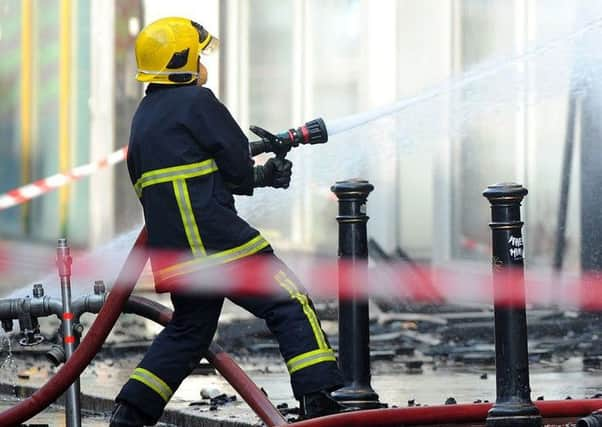Northamptonshire firefighter numbers cut by more than 30 since 2010


The Fire Brigades Union has lambasted the “appalling cuts” to fire services across the country, which it says are putting public safety at risk.
In Northamptonshire Fire and Rescue Service, the number of full-time equivalent firefighters fell from 279 in 2010 to 242 in 2018. Not all of these are ‘frontline’ posts working in fire stations, some are senior officers and fire prevention staff.
Advertisement
Hide AdAdvertisement
Hide AdIn terms of retained, or on-call firefighters, Northamptonshire has 254 posts, although 90 of these are currently vacant because of difficulties in recruiting on-call firefighters for daytime duty.
Northamptonshire’s crews almost a minute and a half longer to respond to callouts in the 12 months to March 2018 than in the same period in 2010 - a 16% increase, bringing the total response time to 10 minutes 36 seconds.
The figures refer to primary incidents, which are the most serious fires with potential to harm people or cause damage to property.
Across England, the number of firefighters has fallen by more than 22% since 2010, from 41,632 to 32,340, and there are now 45 fewer fire stations.
Advertisement
Hide AdAdvertisement
Hide AdThe average time taken to respond to serious incidents increased by more than 30 seconds over the same period.
Darren Dovey, chief fire officer at Northamptonshire Fire and Rescue Service, said: “The decrease in firefighter numbers is not a factor in increased response times in Northamptonshire, as we have not closed any stations or removed appliances.”
Mr Dovey said response times are made up of three factors.
He added: “These are, call handling times, this is the time the 999 operator answers a call, gains the relevant information and then mobilises a Fire Appliance. In the period 17/18 these have increased slightly.
“Secondly, mobilisation time, this is the time the station is alerted to the time the appliance leaves the station, this is largely unchanged.
Advertisement
Hide AdAdvertisement
Hide Ad“Finally, travel time, this is the time the appliance leaves the station to the time it arrives at the fire. This has increased as it generally has nationally and is largely due to increased traffic and traffic calming measures.
“In addition in Northamptonshire we have struggled to recruit on-call firefighters who are available in the day, as such wholetime fire appliances may have to travel further to reach a fire where the local on-call station is not available.”
Mr Dovey said response times in Northamptonshire are also in line with other similar fire and rescue services, adding that an overall comparison is unfair as Northamptonshire is then compared with urban fire and rescue services which are better resourced and cover smaller geographic areas.
The Home Office says local factors could affect response times, and that there is not a straightforward link between response times and the outcomes of a fire.
Advertisement
Hide AdAdvertisement
Hide AdHowever, Matt Wrack, FBU general secretary, said there was a clear link between slower response times and government cuts.
“Year on year we are seeing appalling cuts to the service and these figures are clear evidence that the cuts have gone too far,” he said.
“Understaffed fire stations across the country struggle to provide a 24-hour service to their community, with the starkest effect outside of cities.
“Fire and rescue services are expected to do more with less and it is only down to the dedication of fire and rescue staff that the service is performing at all.
“The service is at breaking point. Public safety is being put at risk.”